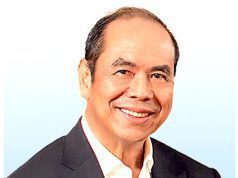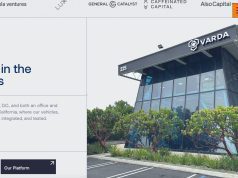Accenture 2022 The Future of Asia Wealth Management Report: Much of Asia Wealth are Not in AUM but Held in Property, Business, Deposits & Cash
18th June 2022 | Hong Kong
Accenture has released the 2022 The Future of Asia Wealth Management Report, surveying 3,200 investors, more than 500 financial advisors in Asia, and senior wealth management, banking & private banking executives. Key findings include Assets under Management (AUM) to double from 2021 to 2025 but much of Asia’s wealth is held in property, businesses, retail deposit accounts and physical cash, not as AUM with wealth management firms. Markets over the next 3 years may be much less kind, most investors in Asia in fact want advice and 29% of clients would prefer to pay for Performance-based fee. Affluent client assets are mainly with primary wealth firm (60%), and with secondary wealth firms (29%) with top 4 asset allocation: Equities: 22%, Fixed income: 16%, Cash/cash equivalents:16%, Real estate (inc. REITS): 14%. Demand for relationship managers has increased, but there is not enough skilled Relationship Managers to meet the demand foreseen in the medium-term and poaching Relationship Managers from competitors is likely to intensify. Relationship Managers also spend half of their time each week on activities that do not directly generate revenue. View key highlights below | View: 2022 The Future of Asia Wealth Management Report
“ Much of Asia Wealth are Not in AUM but Held in Property, Business, Deposits & Cash “
2022 The Future of Asia Wealth Management Report

Key Investor Highlights:
- Much of Asia’s wealth is held in property, businesses, retail deposit accounts and physical cash, not as AUM with wealth management firms
- Markets over the next 3 years may be much less kind
- Most investors in Asia in fact want advice
- What clients would prefer to pay for (expectation): Performance-based: 29%
- Top 4 Allocation Asset Classes: Equities: 22%, Fixed income: 16%, Cash/cash equivalents:16%, Real estate (inc. REITS): 14%
- Affluent Client Assets Distribution: 60% with primary wealth firm, 29% with secondary wealth firms
Key RM / Wealth Manager Highlights:
- AUM to nearly double from 2021 to 2025, Revenue to grow about 60%
- Expect only a modest increase in revenue per RM over the same period, from $1.0 million to nearly $1.2 million.
- Realizing wealth management firm growth plans will be extremely challenging
- Need to retain and acquire clients who are increasingly looking to switch providers
- Not enough skilled RMs to meet the demand foreseen in the medium-term.
- Poaching RMs from competitors is likely to intensify.
- Relationship Managers spend half of their time each week on activities that do not directly generate revenue
1) Asia is the battleground for wealth management
- AUM to nearly double from 2021 to 2025, Revenue to grow about 60%
- China expanded pilot scheme for foreign asset managers to launch pension wealth management products via joint ventures with Chinese institutions
- China’s economic growth rates are now being matched by India
- HSBC announced in December 2021 its $425 million acquisition of L&T Investment Management (customers not only in India but also of non-resident Indian customers around the world)
- HSBC’s goal of becoming Asia’s leading wealth manager by 2025
- StashAway, a Singapore- based wealth platform, is growing rapidly. Launched in 2017, and has more than $1 billion AUM
- Online players such as Grab have launched investment services to complement their existing businesses
- Barclays Private Bank re-entry. The UK-headquartered bank is rebuilding its private banking business in APAC
- Citi consolidation. Consolidate its operations to create a unified wealth organization. Exits retail banking operations in 13 markets while combining two of its wealth management businesses into a new venture called Citi Global Wealth
- Doubling down includes regional banks like Singapore’s DBS and UOB, which are building on their home region branding and presence to penetrate more deeply into their wealth markets.
- UOB bought Citi’s Southeast Asian consumer business.
- DBS acquired Citi’s Taiwan retail unit
2) Realizing wealth managers’ growth plans will be extremely challenging
- Need to retain and acquire clients who are increasingly looking to switch providers
- Need to increase massively the hiring of relationship managers (RMs) at a time of industry-wide talent shortages
- Not enough skilled RMs to meet the demand foreseen in the medium-term.
- Poaching RMs from competitors is likely to intensify.
- Capturing this growth would mean bringing net new money into the industry and doing so in large quantities.
- Much of Asia’s wealth is held in property, businesses, retail deposit accounts and physical cash— not as AUM with wealth management firms
- Accenture research indicates that wealth managers are currently focused on the top line rather than on the efficiency
and performance both of the firm and of its RMs. - Expect AUM to nearly double between 2021 and 2025, they expect only a modest increase in revenue per RM over the same period, from $1.0 million to nearly $1.2 million.
- Efficiency and performance gains would not get firms to their goals.
Markets over the next 3 years may be much less kind:
- Return of volatility that was evident even before Russia’s invasion of Ukraine in February 2022
- Consequences of the COVID-19 pandemic
- Rising inflation and the Federal Reserve’s decision to hike interest rates
- More emphasis on firms to differentiate their proposition beyond simply delivering market returns
Against the stereotype, most investors in Asia in fact want advice:
- Our research shows that today it is the advice-seeking persona who prevails in the region
- Delivering a true advisory proposition that is goals-led, integrated across advisory and investment management, digital-first and evolves the fee model would be crucial
Client / Investor Preferred Approach to Manage Wealth:
- Validator/Advisory: 40%
- Execution/Self-directed: 33%
- Delegator: 16%
- Unsure: 11%
Building Blocks of Advisory Proposition:
- Client investment goals
- The proposition itself
- Channel demands (Eg. Mobile App, Touchpoints with Relationship Managers)
- Fees
Investment goals of affluent investors in Asia:
- Growing wealth in general
- Ensuring a comfortable retirement
- Wealth and asset protection
- Enabling lifestyle purchases
- Paying for healthcare
- Wealth transfer
- Starting/expanding a business
- Buying a house or apartment
- Paying for education
- Relocating to a new city or country
What clients in Asia value from a wealth management proposition:
- Access to investment products and solutions: 79%
- Custody/safekeeping of assets: 77%
- Access to advice on investments and financial planning (inc. retirement): 77%
- Access to market data and research: 77%
- Access to advice on other specialised topics (e.g., business, tax, legal, estate planning, philanthropy): 73%
- Lending and credit solutions: 67%
Clients in Asia prioritize digital communication:
- Mobile application: 64%
- Online banking portal (non-app, secured with log-in): 63%
- Email: 60%
- Telephone with RM/advisors: 57%
- Meet RM/advisors in branch/office: 57%
- Third-party messaging (e.g., WhatsApp or others): 55%
- Telephone with call center: 54%
- Public website (non-app, pre-log in): 53%
- Chat/Video tools (e.g., Zoom, Teams): 52%
- SMS: 50%
- Social media (e.g., LinkedIn): 49%
- Home visit by RM/advisors: 48%
- Fax: 39%
What clients would prefer to pay for (expectation):
- Time-based: 7%
- Asset-based: 17%
- Fixed fee: 20%
- Transaction-based: 22%
- Performance-based: 29%
- Combination of above: 5%
3) Wealth management firms are struggling to provide next-generation advisory
- Progress is being made in taking a portfolio-led approach more systematically, and in offering clients more innovative product suites and investment insights
- Firms are underplaying the importance of RM selection, personalization and insight automation
Clients interested in all aspects of next-generation advisory
- Portfolio construction
- CIO insights and engagement
- RM selection
- New products and offerings
- Wealth continuum lifecycle
- Financial education
- Embedding personalization and hybrid advice
- Insight automation Partners and ecosystem
- Leverage open banking
Allocation of investable financial wealth across asset classes:
- Equities: 22%
- Fixed income: 16%
- Cash/cash equivalents:16%
- Real estate (inc. REITS): 14%
- Digital assets: 7%
- Hedge funds: 5%
- Private equity & venture capital: 5%
- Collectibles: 5%
- Commodities: 5%
- Foreign exchange & currencies (excl. digital assets): 4%
- Other investments: 1%
Challenges:
- Enhancing proposition and capabilities.
- Traditional sales processes and behaviors.
- Talent-, change- and RM-resistance.
- Sub-optimal transformation- management capabilities.
Successful transition to next-generation advice needs to overcome four main obstacles
- Internal capabilities (such as effective segmentation as well as quality data and tools)
- Sales processes and behaviors (such as moving from sales-based advisory to advisory-based sales)
- Talent-and change-resistance
- Sub-optimal transformation-management capabilities.
4) Transformation management is key
- Many firms know “what to do” yet struggle over “how to do it”
- Immediate action: Set up a transformation management office oriented around structuring, monitoring and steering programs, building and implementing program-and organization-wide communications around transformation.
- 78% of business transformations fail
Key Challenges:
- Change adoption: 64%
- Execution complexity: 50%
- Governance: 50%
- Resources: 21%
- Time and budget: 21%
RMs spend half of their time each week on activities that do not directly generate revenue:
- Managing investments: 11.5%
- Business development: 11.2%
- Executing trades inc. checking order status: 10.1%
- Client servicing: 9.6%
- Client/prospect meetings – preparation: 9%
- Client onboarding: 8.8%
- Client/prospect meetings – meeting delivery: 8.6%
- Managing my business: 7.5%
- Training and development: 6.8%
- Administrative tasks: 6.1%
- Internal meetings: 5.8%
- External meetings: 5.1%
5) Winning in advisory means winning overall
- Delivering a satisfactory proposition to the advisory persona in Asia has a significant bearing on retaining clients and being considered their primary wealth management firm.
- Assets held with the primary wealth firm are respectively more than 2x and 7x larger than those held in the secondary and tertiary firms respectively.
Affluent Client Assets Distribution:
- Primary Wealth Firms: 60%
- Secondary Wealth Firms: 29%
- Tertiary Wealth Firms: 8%
- Remaining Wealth Firms: 3%
Sign Up / Register
Caproasia Users
- Manage $20 million to $3 billion of assets
- Invest $3 million to $300 million
- Advise institutions, billionaires, UHNWs & HNWs
Caproasia Platforms | 11,000 Investors & Advisors
- Caproasia.com
- Caproasia Access
- Caproasia Events
- The Financial Centre | Find Services
- Membership
- Family Office Circle
- Professional Investor Circle
- Investor Relations Network
Monthly Roundtable & Networking
Family Office Programs
The 2025 Investment Day
- March - Hong Kong
- March - Singapore
- July - Hong Kong
- July - Singapore
- Sept- Hong Kong
- Sept - Singapore
- Oct- Hong Kong
- Nov - Singapore
- Visit: The Investment Day | Register: Click here
Caproasia Summits
- The Institutional Investor Summit
- The Investment / Alternatives Summit
- The Private Wealth Summit
- The Family Office Summit
- The CEO & Entrepreneur Summit
- The Capital Markets Summit
- The ESG / Sustainable Investment Summit







































